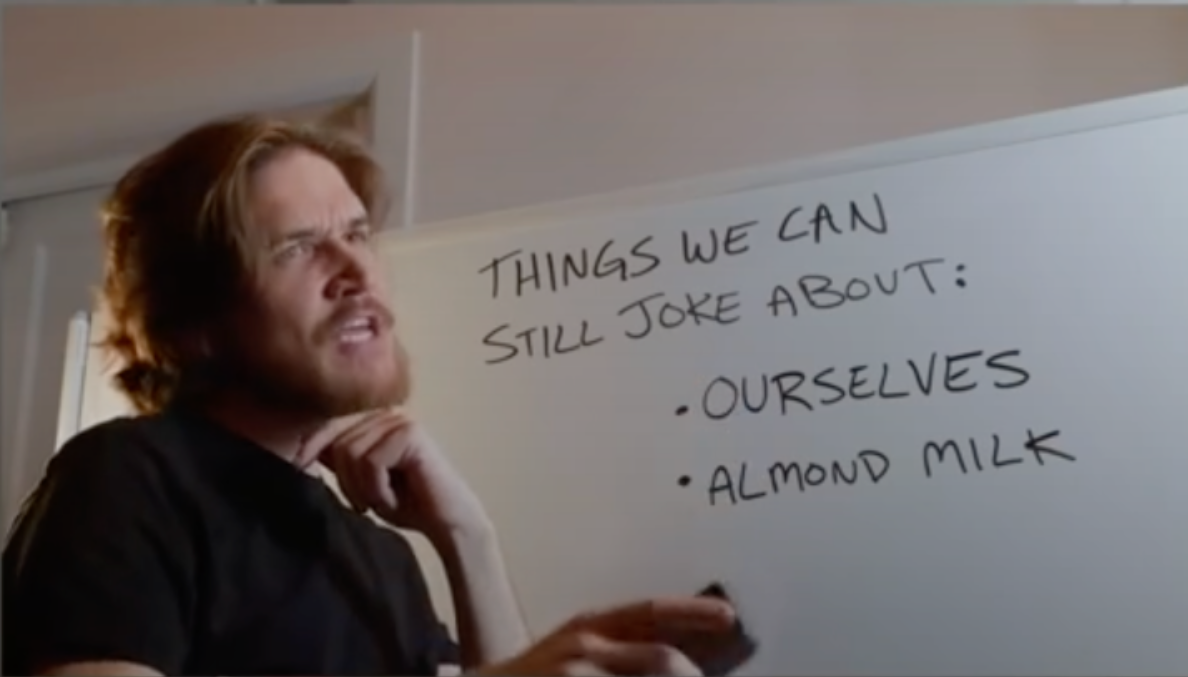Alef Aeronautics’ ‘Model A’ has a driving range of 200 miles and a flight range of 110 miles. The company plans to start delivering cars by late 2025.
BREAKING NEWS! Flying car piloted by CEO Jetson Bankroll and 5 others crash into the Empire State Building! Over 2000 people reported dead or injured, passengers still missing and efforts to find them in the rubble are underway.
I bet these will sell like NFTs, and be just as useful.
With how regulated small drones are I imagine a flying car would be a nightmare to regulate. Also if you thought car crashes were a problem now wait till one crashes into the ceiling of a house or gets shot down over a military base.
Yeah, no way that thing is real.
I don’t even trust people in the current two dimensions they drive in, why in the fuck would I want them in a third dimension. Seems like a bad idea.
This whole company looks like a ploy to defraud investors.
Do they speak in an unnaturally deep voice and wear black turtlenecks?
Not to mention people are bad enough drivers when limited to two dimensions. Could you imagine adding a third?!
The lengths Americans will go to to not build trains is astounding.
But muh liberty…
Trains can’t fly, gottem.
The US has loads of trains. This is a huge misnomer. The US has one of the most complex commercial-industrial train networks in the world. The problem is the commuter one uses the same tracks and is massively underfunded.
America has one of the worst run freight rail networks in the world. Plighted by decades of deferred maintenance and destruction of existing infrastructure in service of the all mighty operating ratio.
Amtrak would be far more reliable without the American freight rail industry clogging up the lines with massive super trains and refusal to make capital improvements to the network.
Someone should design an armored train that can be used by the military.
First, the US would need to have more locomotive manufacturers than you can fit in a single sprinter van. We’ve abandoned rail so thoroughly that we have to have foreign companies manufacture most of our rolling stock these days.
We’ve abandoned passenger rail, but not freight rail. The USA consistently ranks as one of the top users of freight rail (and by many metrics it is the top user of freight rail). The issue is that most American cities outside of the northeast corridor tend to be far enough apart that you are going to be better off flying. High speed rail hasn’t really caught on yet, but I suspect in another 15 years it’s going to be lot more common now that it’s starting to look commercially viable
We have just about the dumbest freight rail operators, though. They care so much about cost curves that they regularly turn down highly profitable expansions because it would make the line go down. Being highly profitable isn’t good enough when the line isn’t going up. It also makes them absolutely allergic to capital expenses, not to mention how extreme their cost-cutting measures are (especially re: labor) even at the expense of safety. Cutting $10 of cost by rejecting $20 of new business is a bargain in the eyes of these morons.
Not to mention the pure madness of the track & right-of-way being privately owned. That shit is just bonkers.
I wonder how much worse our rail mode share would look if you did a comparison of countries without including unit trains. I suspect very, very much worse.
Also average rolling stock age is what, 20 years? And there’s still units from the first days of modern roller bearings in service? Yeesh.
I am not at all expert in the matter, but aren’t freight rates heavily regulated? That would likely put a damper on expansion – if you can’t easily increase price in response to demand, the default strategy will be to milk your existing resources for every drop. Any expansion will detract from profit margin.
I wouldn’t say that at all. I would describe it as the opposite, an unregulated hellscape.
They build and maintain their own tracks at their own discretion except when the public steps in to fund a particular project. There are rules about operating their right-of-way… many of which they have a standard practice of completely ignoring and nobody does anything about it, especially when it comes to the law that they give passenger rail preference.
They mostly can set their own prices, with only market competition controlling what they set them to. The STB is pretty toothless even when there is a complaint of anti-competitive behavior.
Outside of a small number of high-volume passenger corridors, they have complete freedom to set their own schedules. In the last decade, they’ve started increasingly operating trains unscheduled and calling it “precision scheduled rail”. In actual practice, PSR is just running the longest trains they physically can and having them leave the yard exactly when they’re full and not according to any clock. They theoretically need to show right of way to passenger service, but their trains have gotten so big and long that they are physically unable to show right of way and so they just don’t.
The mandatory safety rules are pretty minimum, especially when compared to things like air travel. Enforcement of Environmental Protection rules and post-incident safety reviews are pitifully enforced.
They’re also the only private industry specifically exempt from the NLRA. Just the rail industry has a largely weaker set of worker protections than every other American gets.
I’m sure I could keep coming up with more examples. But as far as I’ve ever seen, the only thing stopping them from expanding service is an unwillingness to do so. Regular Old Market bullshit short-term financial goals are preferred even if they are not sustainable and long-term sustainability is unacceptable because it would hurt short-term financial goals.
The industry doesn’t really need more regulation though. Because what it needs is nationalization, at least of the track and ROWs.
Just in case you’re not aware, armored trains are (or were) a thing. In the US they were used from the US civil war to early in the cold war (at the end there to transport nuclear weapons).
In the rest of the world… the most recent use is by Russia in their invasion of Ukraine.
It isn’t even that dramatic.
Statistically close to all trips are within a couple of miles of home. US average vehicle miles traveled per person per day are a staggeringly high 25, yet still, nearly all trips people make are very close to home. Good pedestrian and bike infrastructure is enough to cover virtually all of those trips. You don’t need roads for cars. You don’t really need trains. You don’t need personal aircraft for sure. You don’t need autotaxies or any other weird techbro drone solution. You just need maintained, pleasant bikeped routes where you won’t feel like at any moment you may get mowed down by a F250 SuperDuty. But we deliberately design spaces to be unpleasant and unsafe for anyone outside of a car to stop people from walking even though designs like that are WAY more expensive for the taxpayer.
High-speed rail and intercity mass transit are super neat and I’d love to see more of it. And that’s definitely the kind of trip a “flying car” is primarily confronting. But it’s not even the real problem that needs fixing. Trips to a park, grocery store, and bar are the trips that need fixing, and the fact that we encourage and sometimes even force designs where you NEED cars to make those trips is madness.
You just need maintained, pleasant bikeped routes
Weather, though. Not every place is California.
Other countries mange this with proper clothing and a variety of alternative public transit options.
Rain Capes are a popular solution for rainy weather when cycling.
Or you chose to avoid the bike that day and take the bus/streetcar/metro/etc.
I live in NYC and by far my favorite aspect is being able to decide between a variety for transit options that best suit the specific trip I’m making. For example, I typically commute by bike, but if it’s raining I can easily switch that trip to be on the subway.
They can be in the shade. Besides, bad weather causes car accidents anyway
There’s very little correlation between cities with good bikeped culture and cities with good weather. The only factor that’s highly correlated is quality of the bikeped network. This idea is a flat-out myth.
and bar are the trips that need fixing (…) and the fact that we encourage and sometimes even force designs where you NEED cars to make those trips is madness.
It’s utterly baffling to me that bar culture is so alive in America where we have to drive everywhere. It seems like a fucking obvious problem that everyone just ignores. Under what circumstances is a person driving themselves to a bar, parking there for a while, then leaving unimpaired? People should be protesting this in the streets; why does no one seem to care?
It’s worse than that. I would venture that in nearly all US places where a new bar can be built there is a required mandatory minimum number of parking spaces to build next to it to ensure it’s “easy” to drive to. Which doesn’t even work, but that’s a separate screed.
Most civil engineers and urban planners don’t even think about it because that’s not the job as they see it. The professions surrounding urban planning and development largely just consider the codes and manuals to be received wisdom and so carry out their teachings uncritically.
Their biggest investors are people who think they’re “smart” for not buying the Brooklyn Bridge from that guy they met in a bar.
Literally all VTOL ideas are like this. People are totally oblivious to the fact that helicopters are VTOLs, so anything that tries to mimic that ability is just building a terrible type of helicopter.
Pretty sure these people are trying to build a stylish helicopter more than anything else.
Netflix might as well start getting the graphics ready for the documentary
Yea, I’m having a hard time believing those claims. Beating gravity requires a lot of energy, and oil still has a very high energy density, so that’s why no one’s really talking about electric planes. Driving range of 200 miles and flight range of 11 miles would’ve been plausible to me.
Agreed
Hey guys… Did your article only have renderings and no actual footage of thule “flying car”?
Also ending your article begging for speculative pre-order deposits and a promised production date within 2 years with “backed by a tesla investor” isn’t the trust builder that you think it is…
Am I the only one saying “FINALLY!!!” about those premium tier pre-order deposit for extra special double secret important people? We can lose money SO much faster now!!!
It’s also the first flying car (fully electric!) to kill 15 people when it crashes into a duplex.
You know what it also is? A purely theoretical 3D rendered vehicle that doesn’t exist.
The company, founded in 2015 by Dukhovny, Konstantin Kisly, Pavel Markin, Oleg Petrov in Palo Alto, California, has been test driving and flying the car’s prototype since 2019.
“The constraints were: it has to be a real car (driving in driving lanes, parking in parking spaces), it has to have a vertical takeoff (otherwise it is not a real flying car), it has to be affordable for most people (not just the rich),” Alef said.
The following year, the first sub-scale prototype was built, and in 2018, the first full-size “skeleton” took to the skies.
It’s for real this time. Whether or not it will be a Tesla lemon, time will tell. But the FAA is generally EXTREMELY safety-conscious.
Cool, wheres that footage?
Guess we’ll see. I don’t have 300k to throw away getting one.
I remember a video we watched in an engineering class back in the early 2000s about a guy who was making “flying cars” that were tested and “flyable”.
They still don’t have a practical prototype.
There’s a suspicious lack of real photos and video of this soon-to-be-ready vehicle that’s set to ship to consumers in just 2½ years. Surely they’re not still in the very early R&D phase, right?
The best actual photos I can find is of an oversized drone with a basic frame the size of a car, a “cockpit” in the middle that will barely fit 1 person, 8 propellers where the entire “car” would normally be in a car, and some light-weight foam side panels slapped on. No car engine or car wheels (except some small castors to roll it around).
Along with the (paraphrasing) “it’s supposed to be a slow-moving vehicle while on the ground” comment in the article, I guess they’re building a big drone with a small lawn mower motor to move you around on the ground.
People can barely drive in 2D, let alone manage 3D travel
I thought we were done beating the dead horse of flying cars.
Why does it have a SpaceX logo on it? This is not associated with SpaceX in any way?
“Approved by the FAA” is overstaying things a bit. The only thing they were approved for was testing; there’s a lot of road (pun intended) between that and certification.
Every 3-4 years, for at least the last 25 years, the WSJ has run a story like this where someone has finally solved all the problems of flying cars. Lots of people throw money at them; nothing ever happens. If you give two seconds of thought to the horror that would result with thousands of people rising into the air every morning to make their commute, you’d realize how absurd this notion is.
People can’t navigate safely in two dimensions, and y’all want to add a third?




















